Different Types of Liquid Filling Machines You Should Know
Whether a machine is simple or complex, it's not one-size-fits-all. And so does a liquid filling machine. When you're in the market for liquid filling equipment, you'll find there are loads of machines out there. Each type of liquid filling machine has its own advantages and disadvantages. So, don't rush your purchase decision. Only the right machine can get the best quality and value for your investment.
But what equipment is best for your business? First of all, you need to have a clear understanding of the different types of liquid filling machines. If you're unsure where to start, don't worry - we've done all the homework for you. In this article, we will delve into different types of liquid filling machines you might've come across on the market. We'll also compare each type and break down their applications. Let's dive right in!
What Are The Different Types Of Liquid Filling Machines?
What is a liquid filling machine? A liquid filling machine is engineered to fill liquids of different densities and viscosities into containers of various sizes and shapes. Based on multiple factors, these versatile machines can be classified into different categories. Let's check out these factors!
The simplest way to categorize a mechanical device is depending on the LEVELS OF AUTOMATION. Based on this factor, liquid filling machines can be divided into three basic types: manual, semi-automatic, and fully automatic.
Manual Liquid Filling Machines
A manual filler is the most basic liquid filling machine. As the name implies, this device requires complete human control during liquid filling. It comes with no power source or automated components. Therefore, each step of the filling process needs to be handled by an operator.
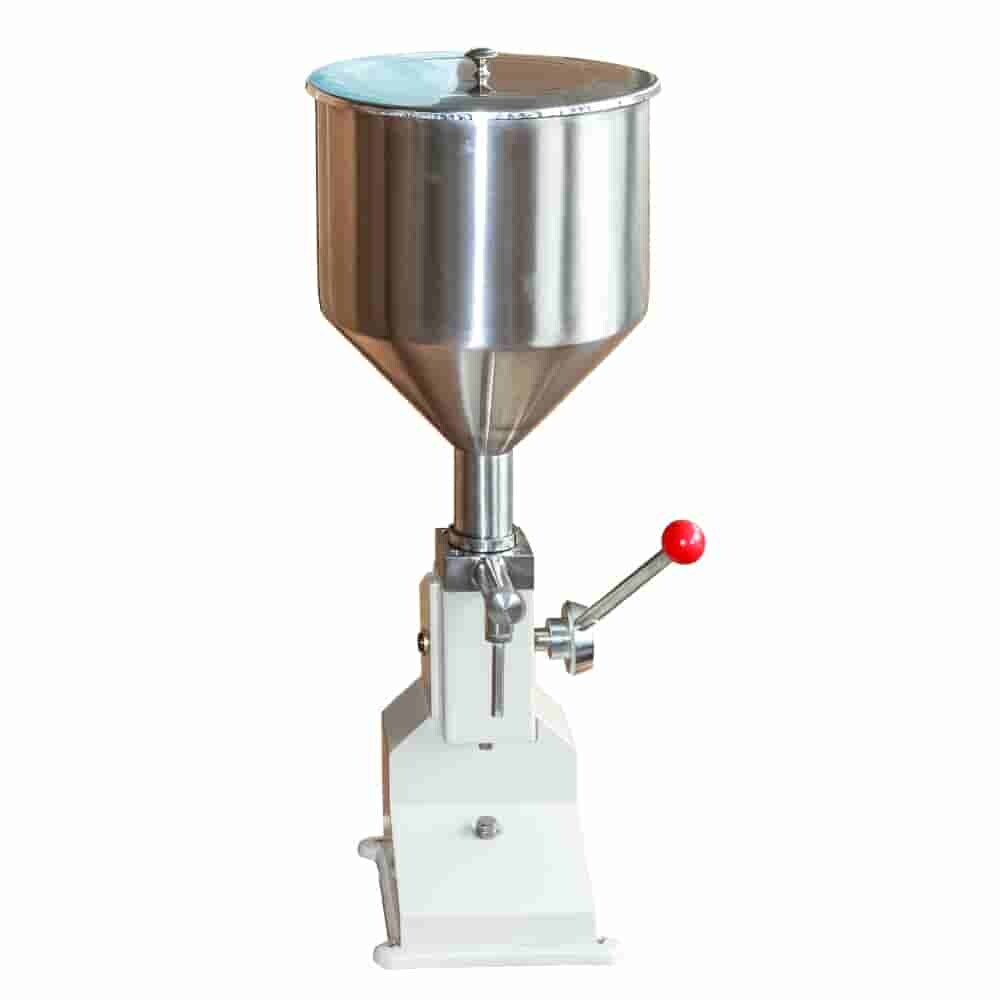
The machine is very easy to use. You only need to set the filling volume by adjusting the screw and pull the lever to fill. In most cases, this type of equipment has one nozzle. This means it only fills one container at a time. Additionally, its filling performance can vary depending on the product characteristics and the operator's skills. But if you're a start-up or on a tight budget, a manual liquid filling machine is a solid choice.
Semi-Automatic Liquid Filling Machines
If you require more filling accuracy and flexibility, go for a semi-automatic machine. This type of machine runs on electricity and has automated filling features. When operating a semi-automatic liquid filling machine, an operator is responsible for initiating and monitoring the filling process. Although it still needs some manual intervention, the liquid filling efficiency can be greatly improved compared to the manual device.
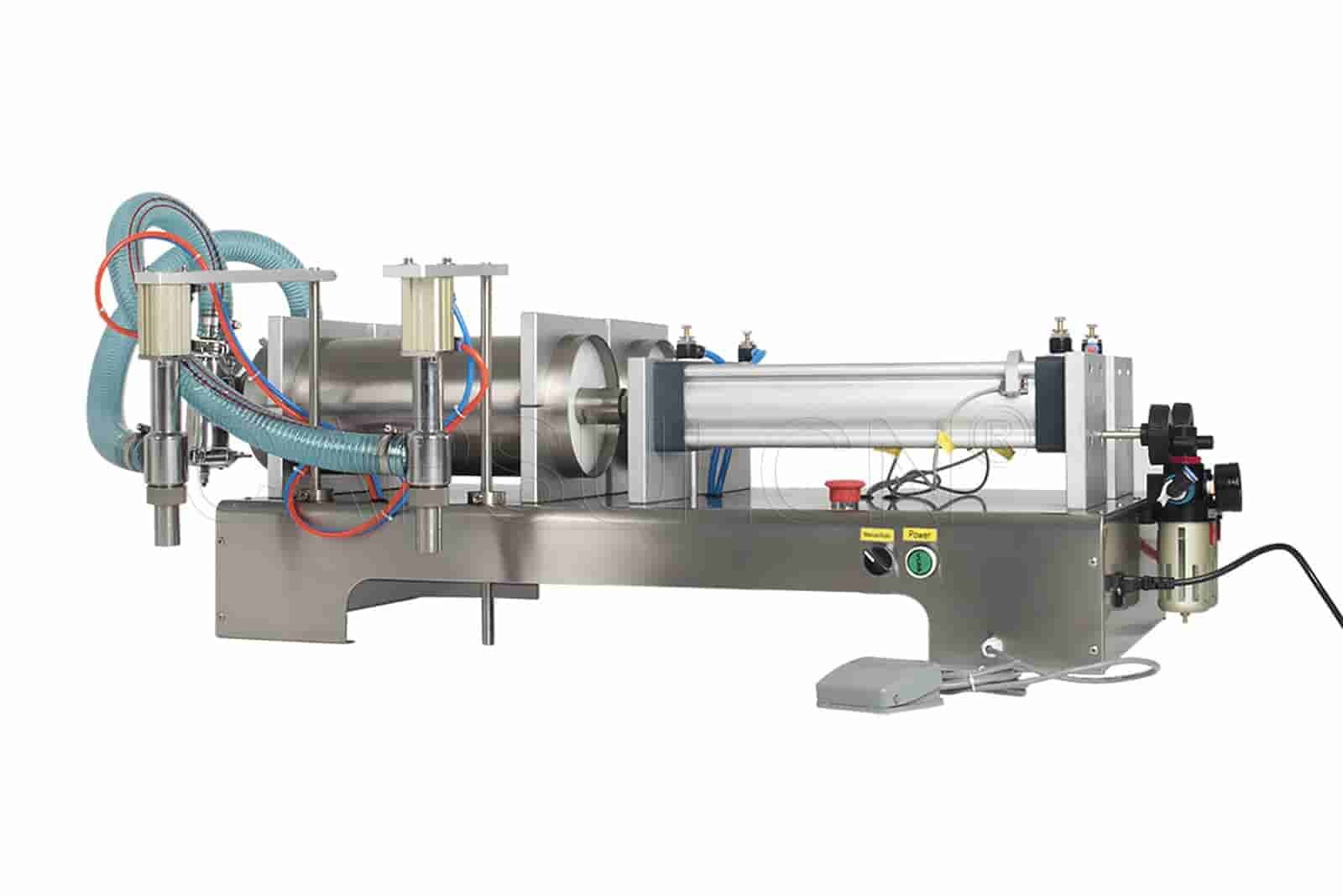
Semi-automated machines utilize pistons or pumps to force liquids of different viscosities into containers. Many of them boast two operating modes - manual and auto. In auto mode, filling operations are controlled by pressing down on a foot pedal switch. Semi-automatic liquid filling machines are ideal for handling low-to-medium-volume production runs.
Fully Automatic Liquid Filling Machines
These machines are pieces of highly automated liquid filling equipment. They are capable of handling small to large filling operations at high rates. Thanks to the high level of automation, these machines require minimal human intervention. There are generally two types of automatic liquid filling machines available on the market:
- Inline Filling Systems
- Monobloc Filling Systems
The former is designed to perform filling operations in a straight-line configuration. These systems are typically equipped with a conveyor. The conveyor brings empty containers into the filling station and then transfers the filled containers to downstream packaging processes. The inline filling systems can be added to an existing liquid packaging line to streamline the manufacturing process.
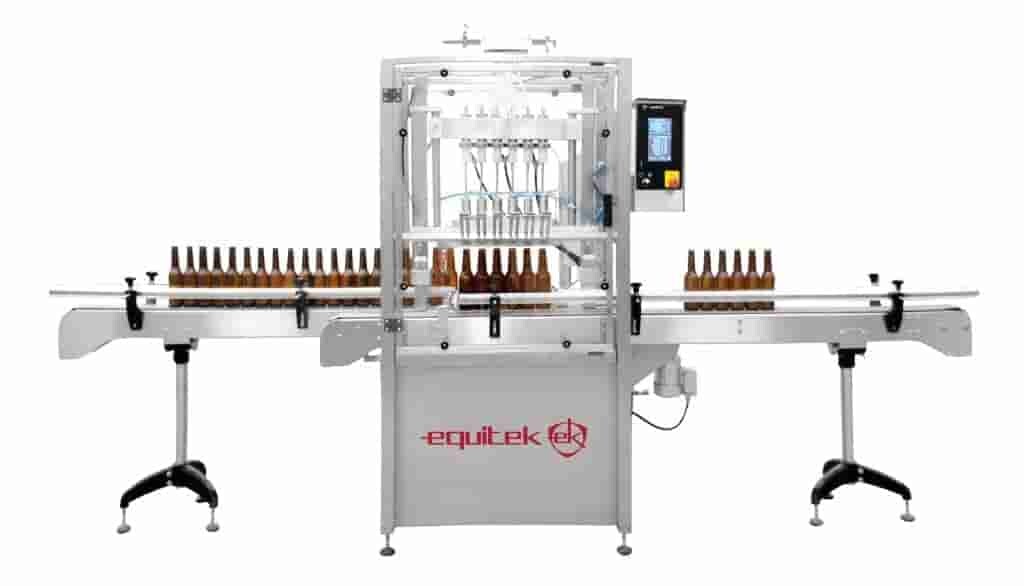
(Image Source: Equitek USA)
The latter is a multitasking system. It combines an array of packaging functions on one frame, accomplishing the jobs of filling, capping, labeling, and beyond. Monoblocs run at a high speed, providing a high throughput. They can be used to handle all types of liquid substances. These make them popular choices for businesses seeking medium-to-large-scale production.
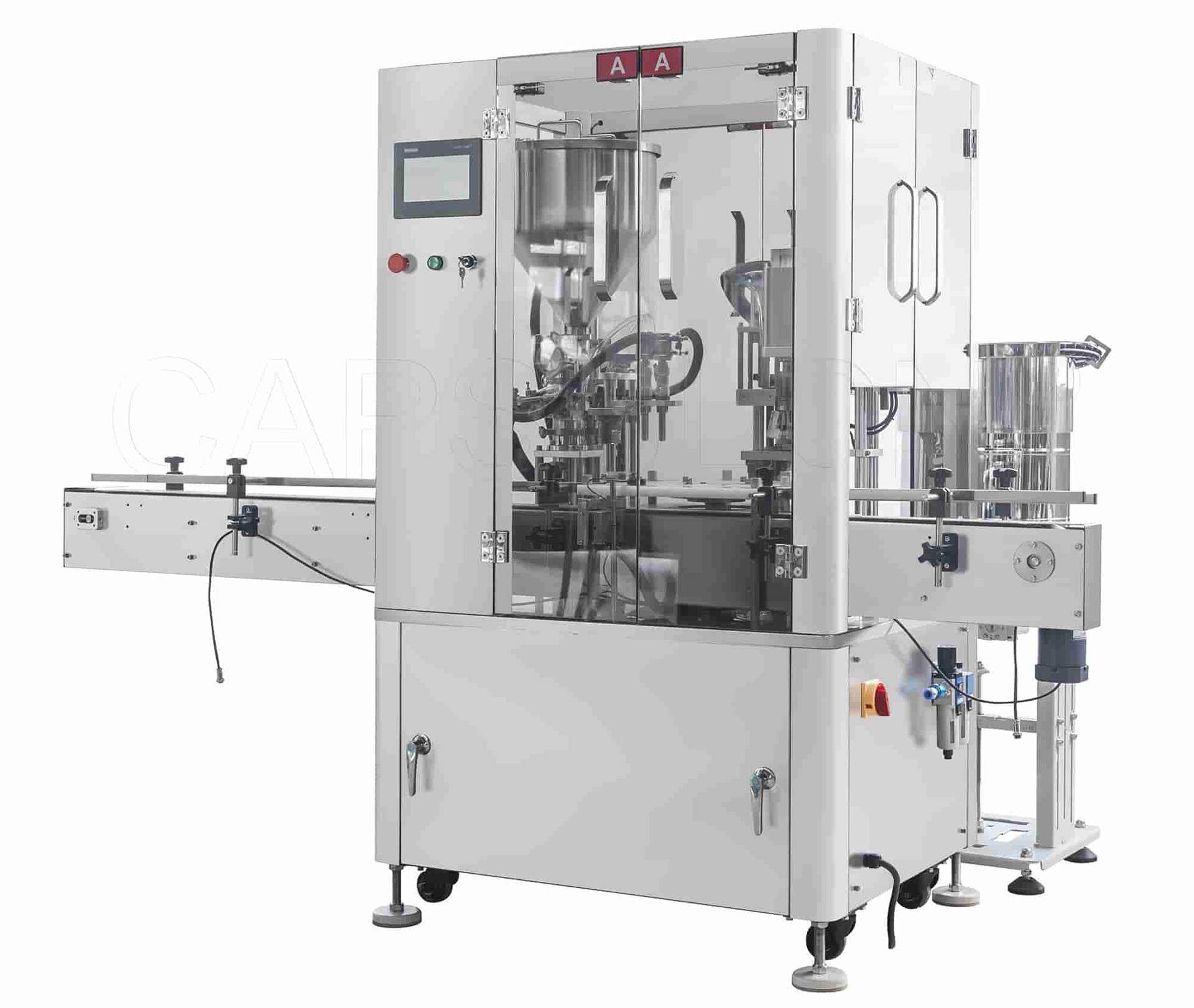
Categorizing liquid filling machines can also be based on the FILLING TECHNOLOGIES they employ. Here are some common types:
Gravity Fillers
In a gravity filler, liquid products flow from a hopper or reservoir into containers by the force of gravity. This machine features a time-based control. It allows for dispensing the same volume of liquids into containers. Therefore, gravity fillers are a type of volumetric filler.

(Image Source: VKPAK)
Pump Fillers
Pump filling machines are also a type of volumetric filler. These devices use a pump mechanism to measure and transfer a specific volume of liquid product from a reservoir to the waiting containers. The pump mechanism includes peristaltic pumps or rotary pumps. These liquid filling machines can be semi-automatic and fully automatic.
are also a type of volumetric filler. These devices use a pump mechanism to measure and transfer a specific volume of liquid product from a reservoir to the waiting containers. The pump mechanism includes peristaltic pumps or rotary pumps. These liquid filling machines can be semi-automatic and fully automatic.

(Image Source: VKPAK)
Piston Fillers
Piston fillers can also control the filling volume. These liquid filling machines draw liquids into a cylinder and then force them into containers using a piston mechanism. The filling volume can be increased or decreased based on the piston's stroke length. Therefore, piston fillers are also volumetric fillers.
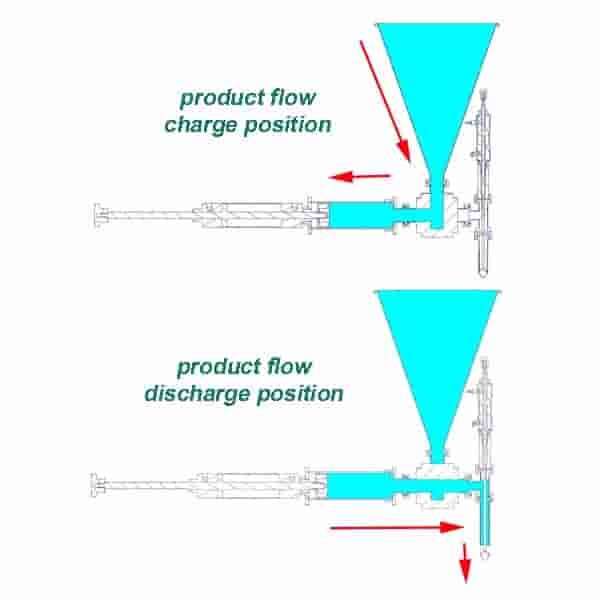
(Image Source: VKPAK)
Overflow Fillers
Overflow filling machines are designed to ensure containers are filled with the liquid product at the same level. They typically utilize diving nozzles to dispense liquids. The nozzles dive into bottles and create a seal over the bottleneck finish to prevent splashes or spills. When the liquids reach a predetermined level in the bottles, the nozzles retract, and excess liquids are allowed to overflow back into the reservoir.

(Image Source: VKPAK)
Vacuum Fillers
Vacuum fillers work by applying a vacuum to the container. This is done to draw liquid products from the reservoir into the container. When the filling process is complete, the vacuum is released, and the container is sealed. Vacuum filling helps protect viscous products from deterioration.
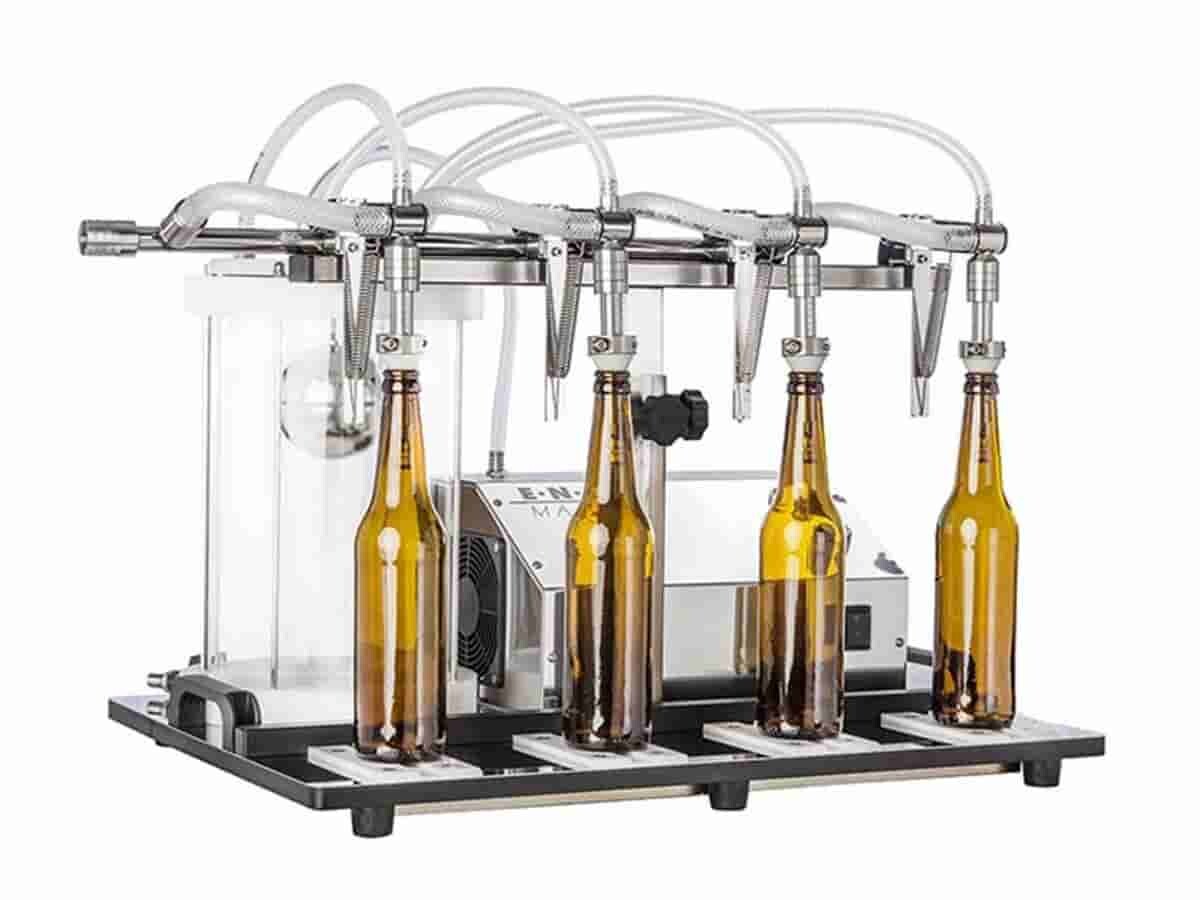
Net Weight Fillers
Net weight filling machines are different from other fillers. These fillers are designed to fill containers by weight. They utilize a weighing scale to monitor the liquid product weight during the filling process. and after filling to ensure precise filling based on the desired weight. These liquid filling machines focus on controlling the weight of the finished products more than their volumes.
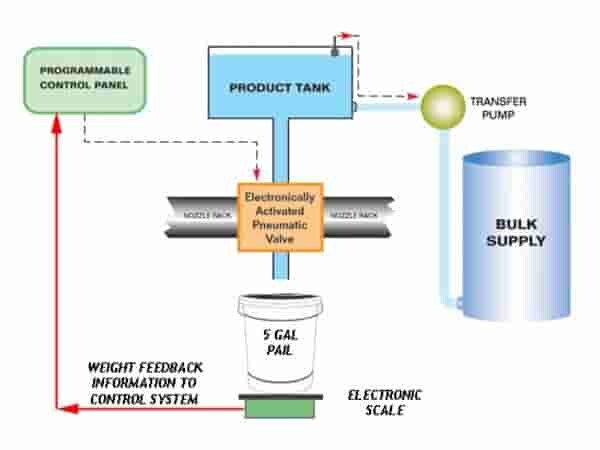
(Image Source: VKPAK)
Comparison Of Different Types Of Liquid Filling Machines
The selection of liquid filling machines depends on what industries you're working with and what products you will fill. Your choice can vary according to the product characteristics and filling requirements. Here's a comparison chart that outlines the differences among the above liquid filling machines.
|
Characteristic/Feature |
Gravity Fillers |
Piston Fillers |
Pump Fillers |
Overflow Fillers |
Vacuum Fillers |
Net Weight Fillers |
|
Viscosity Range |
Low to Medium |
Low to High |
Low to High |
Low to Medium |
Low to High |
Low to High |
|
Accuracy |
Good |
Excellent |
Good |
Excellent |
Good |
Excellent |
|
Speed |
Moderate |
Moderate |
High |
Moderate |
Moderate |
Moderate |
|
Foaming Control |
Limited |
Limited |
Limited |
Excellent |
Excellent |
Good |
|
Container Type |
Various |
Various |
Various |
Consistent Fill |
Various |
Various |
|
Maintenance Requirements |
Low |
Moderate |
Moderate |
Low |
Moderate |
Moderate |
|
Versatility |
Medium |
High |
High |
High |
High |
High |
|
Air Removal Capability |
Limited |
Limited |
Limited |
No Air Removal |
Excellent |
Limited |
|
Hazardous Liquids |
Yes |
Yes |
Yes |
Yes |
Yes |
Yes |
|
Common Applications |
Water, juice, beverages, milk, edible oils, personal care products, cleaning and household products, etc. |
Sauces, condiments, jams, preserves, cosmetics, personal care products, pharmaceuticals, healthcare products, food, nutraceuticals, industrial and chemical products, etc. |
Lotions, creams, shampoos, conditioners, syrups, beverages, sauces, dressings, liquid detergents, cleansers, automotive and industrial liquids, etc. |
Beverages, food sauces, condiments, personal care and household products, pharmaceuticals, healthcare products, chemicals and industrial liquids, etc. |
Pharmaceuticals, cosmetics, personal care products, chemicals, solvents, food, beverages, laboratory use, etc. |
Food, beverages, pet food, agricultural products, chemicals, industrial products, pharmaceuticals, etc. |
The Bottom Line
If you're running or intend to start a liquid manufacturing business, ensuring accurate and efficient filling is always crucial. These all can be done with the right liquid filling equipment. With a clear understanding of the different types of liquid filling machines, you can easily find the best one for your production needs. We hope the information provided in this article will help you make an informed purchase decision.
Leave your comment
Also Offers


Containment Automatic Capsule Filling Machine SFK-703

Fully Automatic Dosator Capsule Filling Machine CZ-40

Our Team
As an expert in the pharmaceutical and pharmaceutical packaging industry, iPharMachine has provided solutions for hundreds of pharmaceutical and health product manufacturers for 17 years. By visiting customers, we get good reviews from our customers.
- info@ipharmachine.com
- English Español Deutsche









